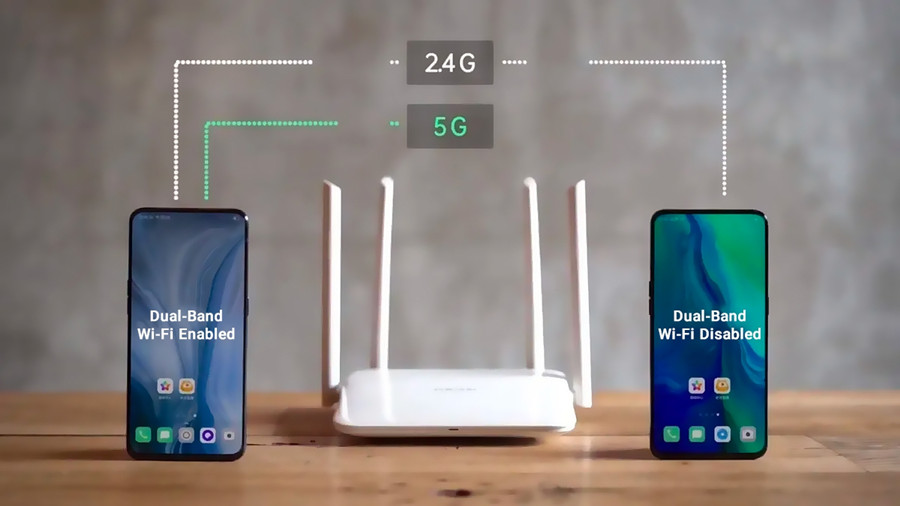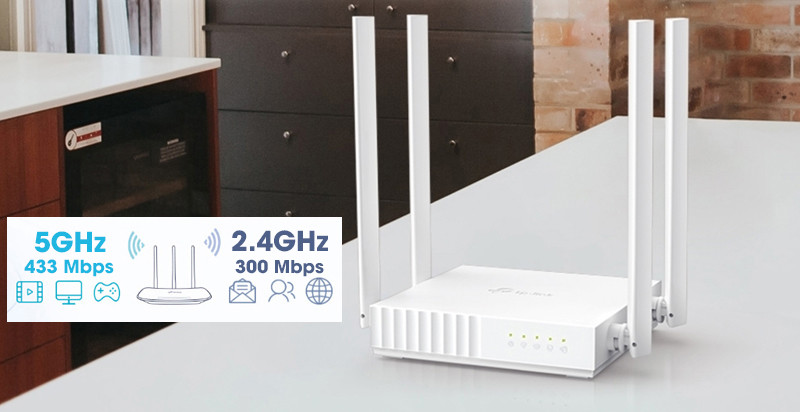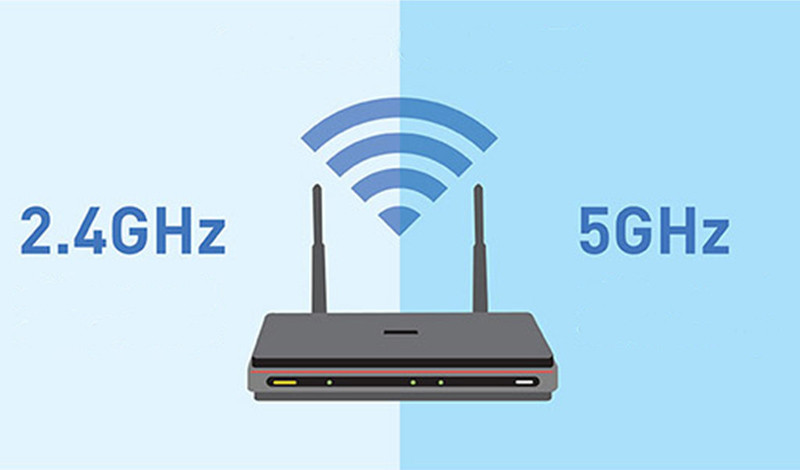When installing a router or extender, or when connecting to a nearby WiFi network, we’ll see the words “5G” or “5GHz” at the end of the WiFi network name. Not only that, but you can easily see the words “WiFi 5GHz” or “WiFi 2.4GHz” in the spec sheet or in the WiFi settings page. So, what exactly do the two types of WiFi, 2.4GHz and 5GHz, mean? What’s the difference? And how to judge whether to use 2.4ghz or 5ghz wifi? Let’s answer these questions for you.
The difference between 2.4g and 5g wifi

What are 2.4GHz WiFi and 5GHz WiFi?
2.4GHz and 5GHz are commonly used to refer to frequency bands. WiFi devices typically communicate with each other by transmitting WiFi signals on the 2.4GHz or 5GHz radio bands.

What is dual-band WiFi?
Basically, dual-band WiFi refers to a WiFi router that supports both 2.4GHz and 5GHz bands at the same time.
There are two types of dual frequency:
– Optional dual frequency: two frequency bands 2.4GHz and 5GHz, only broadcast 1 of the 2 frequency bands.
– Simultaneous dual frequency: 2.4GHz and 5GHz frequency bands broadcast simultaneously.
In addition, there is tri-band WiFi: including 2 5GHz frequency bands and 1 2.4GHz frequency band, suitable for various purposes that require high speed.

Comparison of 2.4GHz WiFi and 5GHz WiFi Specifications
| standard | 2.4GHz wifi | 5GHz wifi |
| Internet speed | 450Mbps-600Mbps | 1300Mbps |
| connection range | 20 meters | 15 meters or less |
| Potential for radio interference | susceptible to interference | Unaffected by wireless devices |
| router support | all routers | Routers that support the 5GHz band |
| ability to penetrate objects | good | generally |
5GHz WiFi is faster but has worse coverage
Use the higher frequency 5GHz WiFi to significantly speed up data transfers. Under ideal conditions, 2.4GHz WiFi can support speeds of up to 450Mbps or 600Mbps, while 5GHz WiFi can reach a speed of 1300Mbps, which is more than double the maximum speed of 2.4GHz WiFi. This means you can download files faster, open web pages faster, and play online games without worrying about network issues.
But there are gains and losses, and the coverage of 5GHz WiFi will be worse. According to the principle of radio wave propagation, the higher the frequency, the greater the long-distance signal loss. Since 5GHz WiFi operates on a high frequency band, you won’t get the same connection range as 2.4GHz Wifi. Overall, 5GHz WiFi provides good WiFi access at a distance of 15 meters—shorter than 2.4GHz WiFi provides good WiFi access at a distance of 20 meters.
5GHz WiFi is more open and free from interference
An important factor to mention is radio interference, which can make your connection unstable and slow down. 2.4GHz WiFi is more prone to interference problems, because the 2.4GHz frequency band is too crowded, including WiFi devices and non-WiFi devices, such as TVs, microwave ovens, ISM band devices, camera monitors, Bluetooth devices, etc. are all using this frequency band. So sometimes the signals in the same frequency band will interfere with each other, causing the data transmission speed to not reach the full capacity.
The 5GHz WiFi is more open, and the WiFi using the 5GHz band will not be as prone to the same frequency phenomenon as the 2.4GHz WiFi.
possibility of congestion
Since 5GHz WiFi operates on a wider frequency band than 2.4GHz WiFi, you don’t have to worry about congestion when there are too many devices accessing the network, which means your devices will always have a stable and secure network connection.
Which router supports 2.4GHz WiFi or 5GHz WiFi?
2.4GHz WiFi: All WiFi routers support 2.4GHz WiFi
5GHz WiFi: Routers that support the 5GHz band or newer WiFi standards usually support two bands and are called dual-band routers or tri-band routers.
Choose 2.4GHz WiFi or 5GHz WiFi?
When there are many obstacles in the use environment and you want the WiFi to cover the farthest, you should choose the 2.4GHz frequency band. 2.4GHz WiFi can also smoothly meet basic web browsing and social needs.
When you want to use the network for smooth, low-latency online games, watch high-quality full HD, 4K online movies, or want to use the network to exchange large amounts of data, you should choose the 5GHz band.
in conclusion
5GHz WiFi is faster and has less radio interference than 2.4GHz WiFi, but also has poorer coverage. So, when choosing 2.4GHz or 5GHz WiFi for your device, please base it on your usage scenario. Or buy a router that supports Band Steering and/or Smart Connect to help simplify matters.









